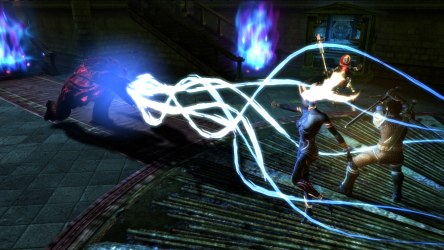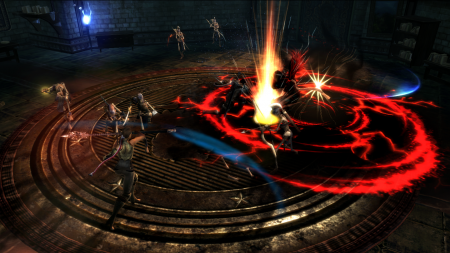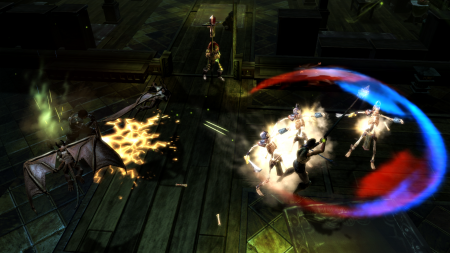Dungeon Siege III – The Verdict
I was discussing with some friends the other day the merit of review scores, a subject which is very much one that is likely to cause some arguments. I for one see the need for the usual scores out of 5, 10 or 100 along with an A-D system, they make it easy for the reader to find out what the reviewer thought of the game. I am of the opinion that the content of the review is more often what should be used to judge a game. Regardless, my friends and I were talking and we came to the agreement that games that usually get a 60 or 70 are often worthwhile playing. They may not set the world alight, and they may have some issues, but they are quite often thoroughly enjoyable.
If I was to use the numerical rating system for Dungeon Siege III it would certainly sit in the mid-70s range. Here on The Reticule, I would give it a verdict of On Target. That is what I will do later, but a little test for you all, if you do read the rest of this review can you please leave a little comment along with your thoughts on the game, or on review ratings themselves. A nice test to see how many people read on even after I have revealed my rating for the game.
It is worth noting right now that I have been playing the PS3 version of Dungeon Siege III not the PC version, which incidentally I may end up playing anyway at a later date. I have read rumblings that the control system on the PC version is a tad awkward and limited, that is something I will hopefully experience myself, but what I will say is that the controls for the PS3 version are very intuitive and well set out.
The camera though was a bugbear throughout my time with the game, in the close up camera you get to see all the action in detail, but you aren’t able to readily see what traps you may be walking into in the distance. The pulled out camera does provide a slight increase in range of vision, but it is offset by being too far out to see what is happening.The happy middle ground is missing and when compared to the camera from a game like Torchlight, I found it a right pain the arse.
Ignoring the camera and there is a fun game waiting to be played, you choose one of a handful of different preset characters, I went with Lucas Montbarron who is your everyday sword wielding character and in all honesty, probably the most bland character but very satisfying to play with in combat. The other characters who you will come across in the story can become your companions so you won’t be missing their fancy tricks too much if you don’t choose to play with them directly.
The best bit about your companions is that you have full control over their abilities and equipment loadouts. This is one of the best parts of the game, through your different characters abilities and traits you can really change how you approach the game. You can mould your character, and your companion as you see fit, do you want to be steal life with every enemy you kill or do you want super-charged critical hits? Do you want your summoned creature to have more health or deal more damage? Do you want your equipment to lend itself towards dual-wielding or do you want to focus on your two-handed longsword?
It is this character customisation which really sells the game in my eyes, especially when there is little of its’ ilk on the consoles. The PC may be filled with games like Torchlight and Diablo, but there isn’t quite as much of it on the consoles so to see Dungeon Siege III on them is a welcome sight.
In truth the story isn’t too shabby either and the quests are darn well done, while there are one or two ‘go kill x and I’ll give you y’ there is generally a well written explanation for why you are being sent on your way to do this. It is nice not to be patronised with the cliched quest of killing 10 badgers and returning their coats in order to gain 100xp.
Whilst Dungeon Siege III is a welcome addition to the console lineup, it isn’t ground breaking and fails to fully convince you that it deserves to be called a really really good game. It lacks the charm and joy of discovery that other dungeon crawlers are filled with. At the end of the day, it does a good job without being spectacular.
Verdict – On Target
Platforms Available – PC, 360, PS3.
Platform Reviewed – PS3


